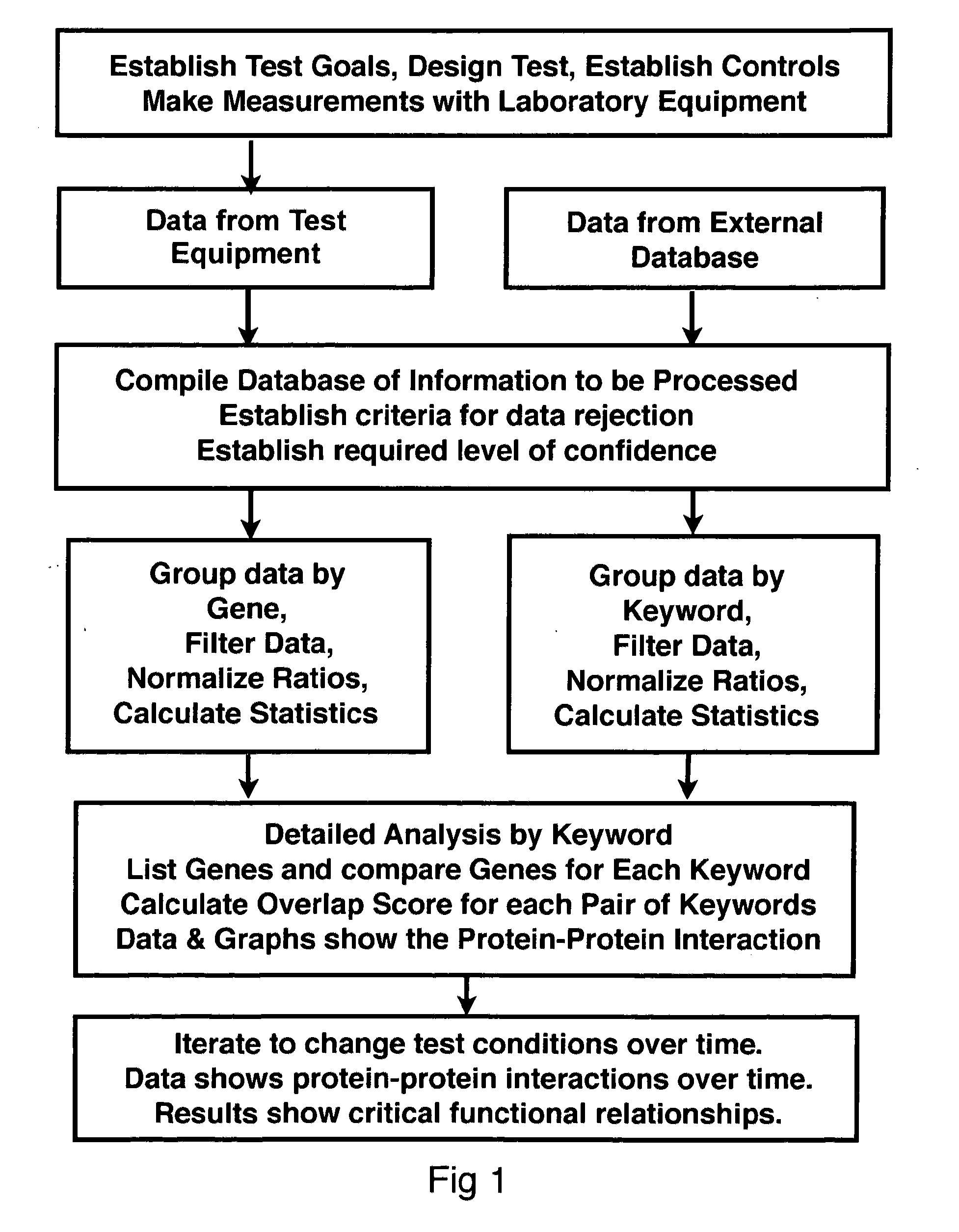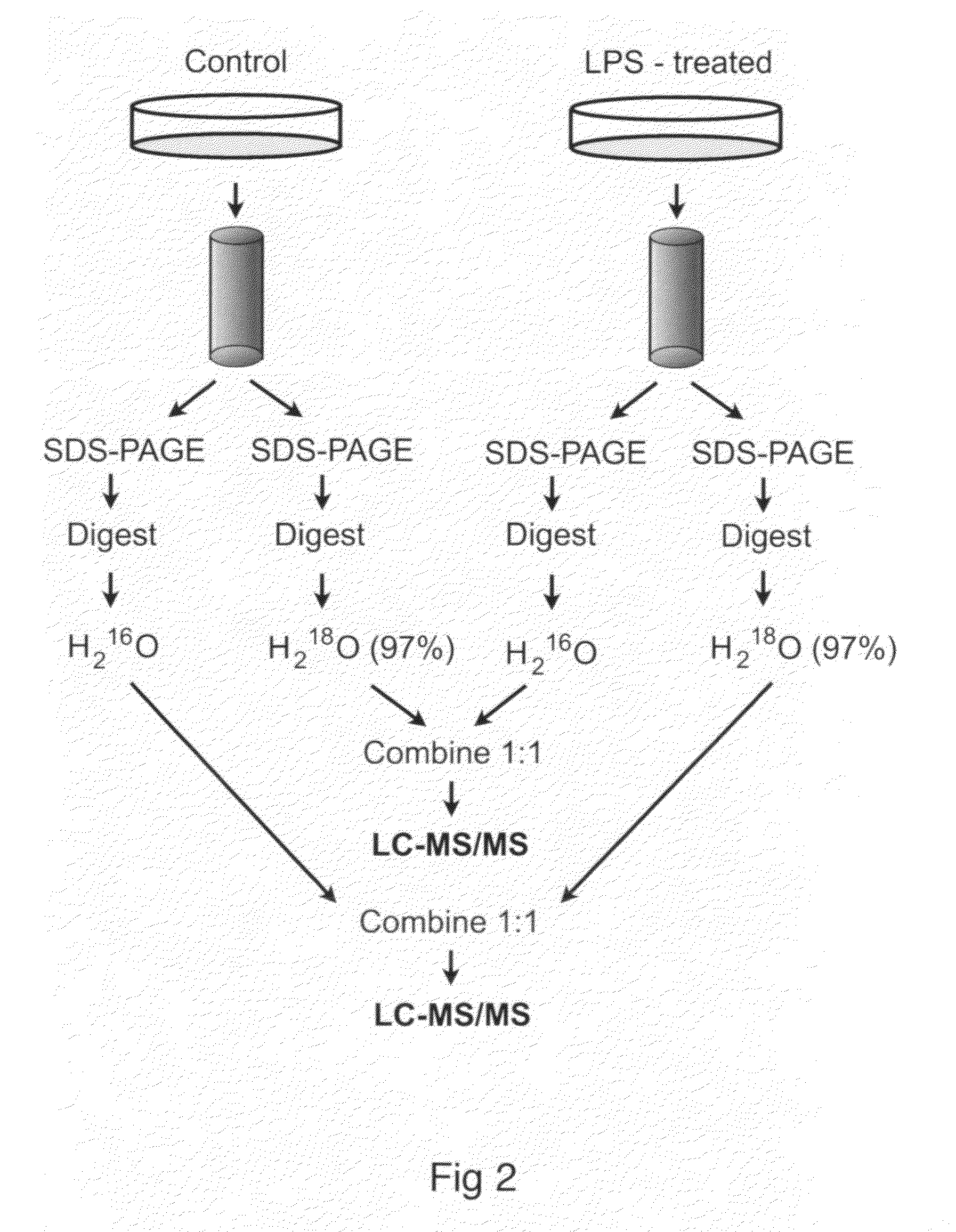Method for quantitative analysis of complex proteomic data
a proteomic data and quantitative analysis technology, applied in the field of data processing methods, can solve the problems of insufficient information provided by analysis of gene sequence and abundance to explain the mechanism, function and activity of biological processes, and inability to determine the complete sequence of deoxyribonucleic acids, etc., to achieve the effect of being understood by a human and being easy to understand
- Summary
- Abstract
- Description
- Claims
- Application Information
AI Technical Summary
Benefits of technology
Problems solved by technology
Method used
Image
Examples
Embodiment Construction
Discussion of Proteomics
[0052]Proteomics is the study of protein functions. By contrast, genomics is the study of gene functions. The complete set of proteins expressed by a cellular genome under specified conditions is popularly referred to as the proteome. Over the past decade, there has been a significant effort to comprehensively describe differences between cellular states by changes in the proteome. Differences in protein expression and modification have been used to investigate the pathology of disease processes (Hanash 2003) and highlight differences in gene regulation (Mootha, Bunkenborg et al. 2003). Technological advances allow increasingly efficient parallel quantitative analyses of protein abundance and modifications (Aebersold and Mann 2003).
[0053]The proteome is a more dynamic counterpart to the genome and proteomic experiments can generate a staggering amount of data despite incomplete sampling of all cellular proteins (Cox and Mann 2007). Nevertheless, the promise o...
PUM
 Login to View More
Login to View More Abstract
Description
Claims
Application Information
 Login to View More
Login to View More - R&D
- Intellectual Property
- Life Sciences
- Materials
- Tech Scout
- Unparalleled Data Quality
- Higher Quality Content
- 60% Fewer Hallucinations
Browse by: Latest US Patents, China's latest patents, Technical Efficacy Thesaurus, Application Domain, Technology Topic, Popular Technical Reports.
© 2025 PatSnap. All rights reserved.Legal|Privacy policy|Modern Slavery Act Transparency Statement|Sitemap|About US| Contact US: help@patsnap.com



